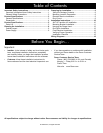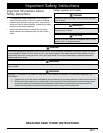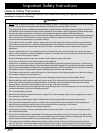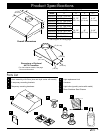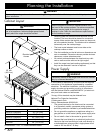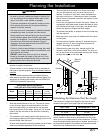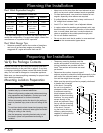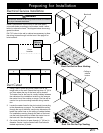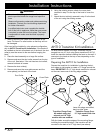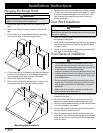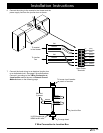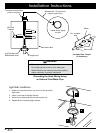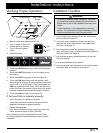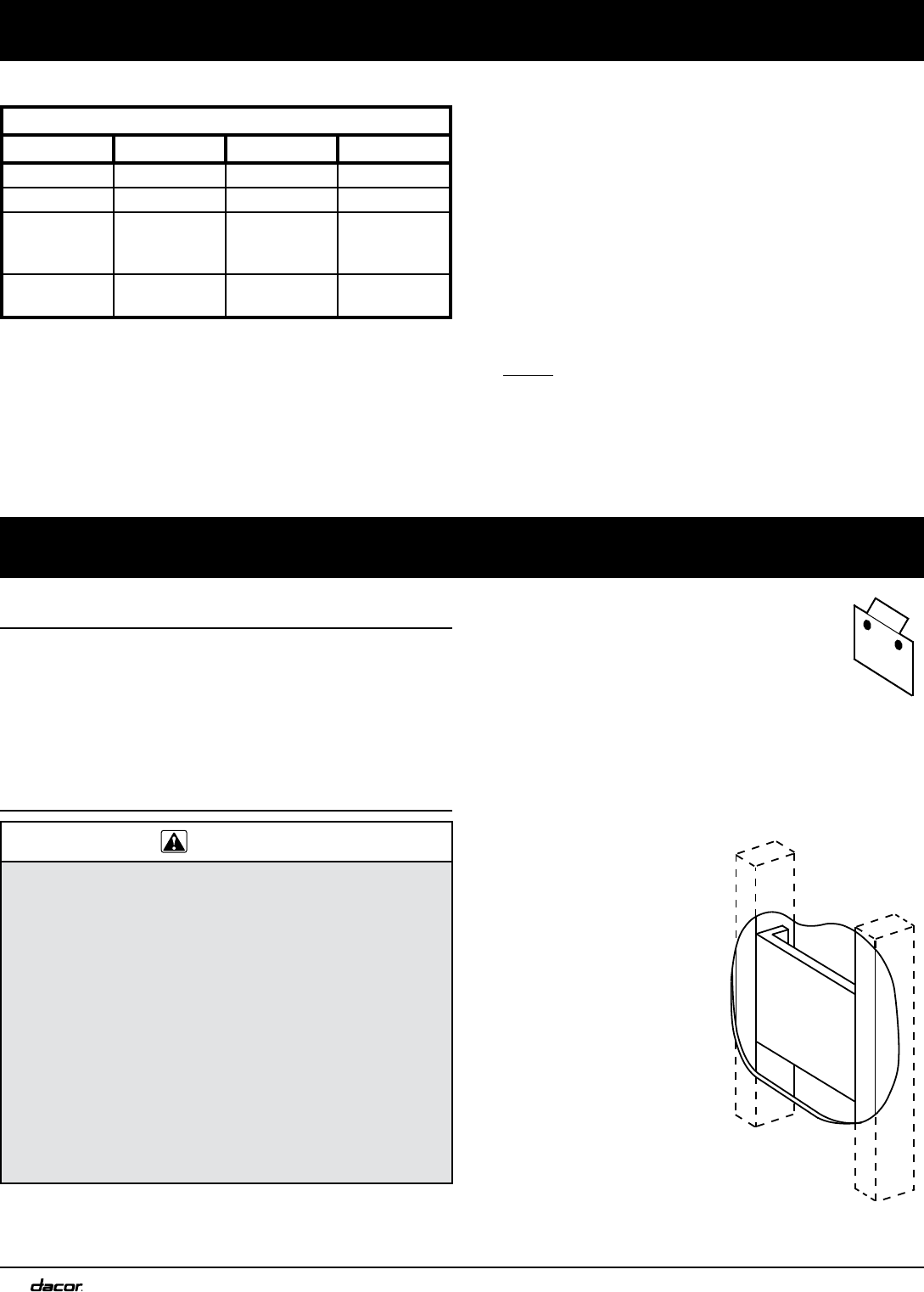
8
Planning the Installation
Preparing for Installation
Duct Work Equivalent Lengths
EQUIVALENT LENGTHS
Piece Subtract Piece Subtract
8” 90° elbow 7 feet 10” 90° elbow 5 feet
8” 45° elbow 3 feet 10” 45° elbow 2 feet
3¼” X 10”
to round 90°
transition
25 feet
3¼” X 10” to
8”/10” round
transition
4 feet
Roof cap *
Wall cap with
damper
*
* The equivalent lengths of roof and wall caps vary with
model and configuration. For equivalent length, contact the
manufacturer or a qualified HVAC specialist.
Duct Work Design Tips
Wherever possible, reduce the number of transitions •
and turns to as few sharp angles as possible. Two
staggered 45° angles are better than one 90°.
Keep turns as far away from the hood exhaust as pos-•
sible, and as much space between bends as possible.
For best performance, use round duct instead of rect-•
angular, especially when elbows are required.
If multiple elbows are used, try to keep a minimum of •
24” straight duct between them.
Avoid “S” or “back to back” use of adjacent elbows.•
In regions where the weather gets extremely cold, use •
thermal breaks, such as a short section of non-metallic
duct, to avoid indoor heat loss. Locate the break as
close as possible to the outside pass through point.
Do not use flexible metal duct.•
Do not• use duct work that is smaller in cross-sectional
area than the recommended types above.
Verify the Package Contents
Unpack the parts box and verify that all parts have been
included according to the parts list on page 5. If any item
is missing or damaged, please contact the dealer immedi-
ately. Do not install a damaged or incomplete appliance.
Make sure you have everything necessary for proper instal-
lation before proceeding.
Mounting Location Preparation
WARNING
The electrical service to the range hood should be •
installed only by a licensed electrician.
Observe all governing codes and ordinances during •
site preparation and installation. Contact your local
building department for further information.
Failure to properly anchor the hood to the wall may •
result in personal injury due to the unit falling off the
wall.
To avoid an electric shock hazard and property dam-•
age, locate electric wires and water pipes and avoid
drilling or cutting in the vicinity.
Use the temporary mounting brackets only to hold •
the hood in place until permanent anchoring is
installed.
Temporary mounting brackets, and the •
screws and anchors to hold them in place
during installation are provided with the
hood. Two anchors and screws are used
per bracket.
Determine the number, size and type of •
anchors required to attach the hood permanently to the
wall and/or the cabinets based on the type of installa-
tion and the weight chart on page 3.
Make sure the mounting surface is properly reinforced •
to handle the full weight
of the hood. If mounting
the unit to a drywall or
plastered surface, install
a reinforced mounting
block between the studs
behind all hood mounting
locations. You may attach
screws directly to the
studs and cabinets if they
line up with the mounting
holes in the back and top
of the hood. If mount-
ing the hood to brick or
masonry, select anchors
capable of holding the full
weight of the hood.



